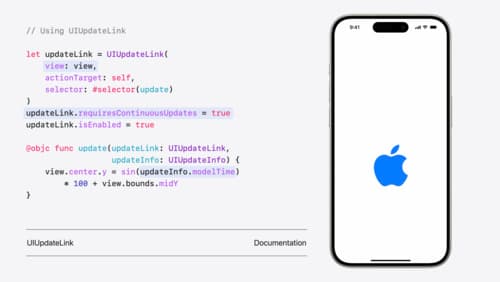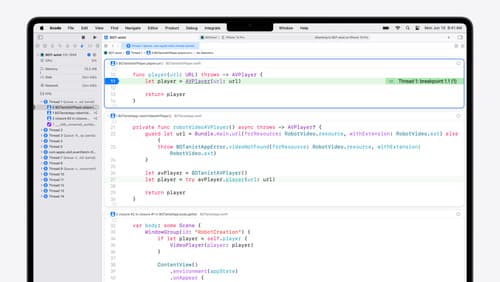How do I segment code for ios 15 and code for new ios versions?
Asked on 2024-08-01
1 search
To segment code for iOS 15 and newer iOS versions, you can use Xcode's target conditionals and filters to specify which parts of your code should be compiled for each version. Here are some steps and tips based on the WWDC sessions:
-
Target Conditionals: Use target conditionals to compile parts of your files for specific iOS versions. This allows you to include or exclude code based on the iOS version you are targeting.
-
Separate Files: You can have separate files for different iOS versions. For example, you might have different app lifecycle files for iOS 15 and iOS 18. Xcode allows you to use filters to specify which files should be included for each target based on the SDK.
-
Unified Metal Shaders: If you are working with graphics and shaders, you can use unified metal shaders to compile your shaders once and deploy them to both macOS and iOS. This helps in maintaining a single codebase for multiple platforms.
-
Xcode Project Configuration: Properly configuring your Xcode project can help you manage multiple iOS versions. You can set up your project to target all Apple devices uniformly while still allowing for customization when needed. This is particularly useful for games and other applications that share a common codebase.
For more detailed guidance, you can refer to the following sessions from WWDC 2024:
- Port advanced games to Apple platforms (06:56)
- What’s new in Xcode 16 (00:33)
- Migrate your app to Swift 6 (07:45)
These sessions provide insights into how to manage code for different iOS versions, use new features in Xcode, and migrate your app to newer Swift versions.

What’s new in UIKit
Explore everything new in UIKit, including tab and document launch experiences, transitions, and text and input changes. We’ll also discuss better-than-ever interoperability between UIKit and SwiftUI animations and gestures, as well as general improvements throughout UIKit.

Port advanced games to Apple platforms
Discover how simple it can be to reach players on Apple platforms worldwide. We’ll show you how to evaluate your Windows executable on Apple silicon, start your game port with code samples, convert your shader code to Metal, and bring your game to Mac, iPhone, and iPad. Explore enhanced Metal tools that understand HLSL shaders to validate, debug, and profile your ported shaders on Metal.

What’s new in Xcode 16
Discover the latest productivity and performance improvements in Xcode 16. Learn about enhancements to code completion, diagnostics, and Xcode Previews. Find out more about updates in builds and explore improvements in debugging and Instruments.
